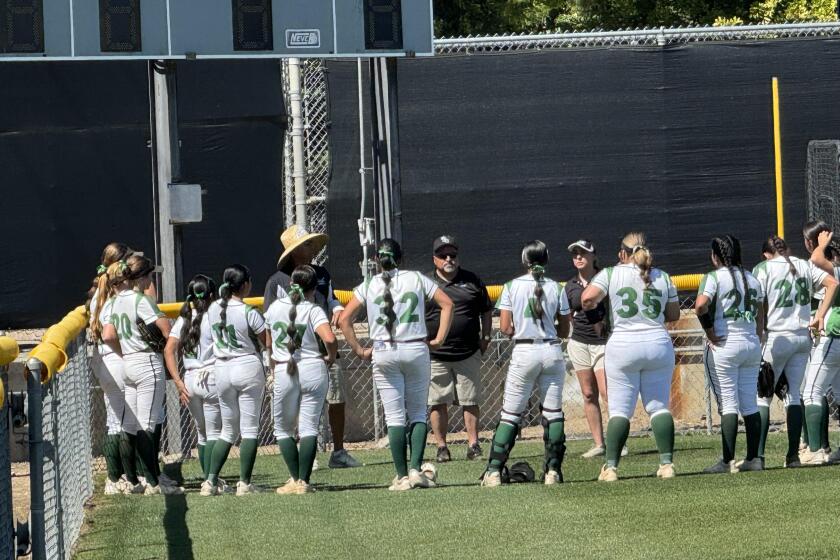Golf Idyll: British Open at St. Andrews
I like the British Open for the same reasons I like real diamonds, original paintings, solid gold, 100% wool, white bread, grand opera and sterling silver.
This is not your Fiduciary and Indemnity Greater Greensboro Open or your Perpetual Payments Insurance Open. This is not some rubber mat tee track in East Texas or a condominium-lined housing project in Tempe. This is golf the way they used to play it with gutta-percha balls and clubs that were known as mashie niblicks and cleeks. A three-wood was a spoon, and you drove the ball with a persimmon clubhead with screws in it, known as a “brassie.”
You shoot your way into this tournament. No Chamber of Commerce sends a car for you. They really don’t care whether you come or not. They’re not trying to make real estate deals, they’re trying to make history.
Trent Jones or Pete Dye didn’t design the course. Richard the Lion-Hearted or Charles II did.
St. Andrews is as old as golf. Period. This is where it all began. This is where the first player shouted “Get legs!” or “Bite, dammit, bite!” This is where the first player disappeared in the rough, took a sneaky look around and then kicked his ball back on the fairway with a “Here it is!”
This little corner of the world that is forever Scotland, where the citizens all look like the cast of Brigadoon and the language is like birds singing, is where the game took its first toddling steps, 400 years before television.
The golf course, like the people, is eccentric. It’s as dotty as a guy wandering around in a Napoleon hat or a dowager playing poker.
It’s also diabolical. It just sits there, flat and sleepy, like a snake sunning itself on a flat rock. There isn’t a tree on it. It’s as level as a pool table. You almost don’t have to get the ball in the air. The duffer can’t wait to get at it. It looks like a hackers’ paradise. The first look Sam Snead got at this cradle of golf from a train window, he scandalized a nation of golf lovers by observing “looks like an old abandoned golf course out there--or is it an airfield?”
Sam found out. He won the tournament. But by shooting 290. You don’t win many tournaments in the States shooting 290. You shoot 290 at the Buick Open, you don’t make the cut.
There’s no water on it to speak of. Just a little trickle of a stream the Scots call a “burn” that meanders along across the first and the 18th holes, and it’s got just more water in it than a bird bath. Nevertheless, in 1970 a player actually putted his ball into the Swilcan Burn. Embarrassing things happen at St. Andrews.
The course is like a homicidal maniac going around in women’s clothes. A nice part for Rod Steiger. It looks as if it should be home making biscuits--instead it’s sharpening shivs. It’s really a serial killer that manages to look like a choir boy.
Don’t think you’re going to straighten out this 18-hole sadist with a drive and an eight-iron. This isn’t the Centel Classic or the Isuzu International. You’ll need all 14 clubs to defend yourself against this sociopath if the wind blows and the seas run. You don’t attack this course. You clinch with it a lot.
Americans have ambivalent feelings about this tournament. It makes every other tournament look like a fight with your chauffeur. Americans would just as soon skip this one, if they didn’t need it for their resume.
Arnold Palmer and Jack Nicklaus restored this venerable relic to its proper position in the world of golf. It was just kind of an annual walk in the sun for Peter Thompson of Australia. He won it three times in a row and five times altogether in the days when the American players suddenly remembered they had urgent other business when the British Open came up.
Thompson was a superior player. It wasn’t that he just had a run of luck. Neither did Bobby Locke of South Africa when he won his three British Opens. It was just that they didn’t have much to beat in those days. A 286 was good enough to beat back one field for Thompson, a 285 was too much for another seven years later.
Like any public enemy, St. Andrews needs accomplices. Its are wind and rain. When the seas are running and the barometer is falling, playing St. Andrews is like sailing a square-rigger around the Horn in a force-10 gale. Scores get shipwrecked. Careers are marooned.
It’s not invincible. Left alone on a balmy day, it’s docile, vulnerable. Curtis Strange shot a 62 on it once.
But the beauty of a British Open is the course, and the members don’t care if a player shoots 62. They say “Good on him! He played well.” In America, if a player shoots a precocious low round in the Open, the members want alligators posted in the ponds, quicksand in the traps and rough you could hide lions in the next year.
The British don’t trick up their Open courses. They would not insult St. Andrews. Even without its weather allies, it is not without fangs. Even in hothouse conditions, you have to drive the ball well here. More than 120 pot bunkers roam the course like park muggers. You have to aim between them. St. Andrews is always armed and dangerous. You have to tee it straight here. Which is why Jack Nicklaus won two of his three British Opens at St. Andrews.
St. Andrews is like the Indianapolis 500. You keep to the left if you want to stay in the chase. It may look as flat as West Texas, but it’s as subtle as a Shakespeare sonnet.
Americans hate to play the run-up game some holes call for. St. Andrews is not your sprinkler-head, power-mower, cart-path track in the desert. It used to be watered by God and mowed by sheep.
The notion of a golf club founded in 1552 still being able to make the world’s best players throw their clubs in disgust is ambrosia to golfers everywhere. Every golfer in the world has to love this Old Lady of the Firth of Forth, Empress of golf, keeper of the faith. If you love golf, if you love tradition, you’ve got to love the British Open at St. Andrews.
More to Read
Get our high school sports newsletter
Prep Rally is devoted to the SoCal high school sports experience, bringing you scores, stories and a behind-the-scenes look at what makes prep sports so popular.
You may occasionally receive promotional content from the Los Angeles Times.






